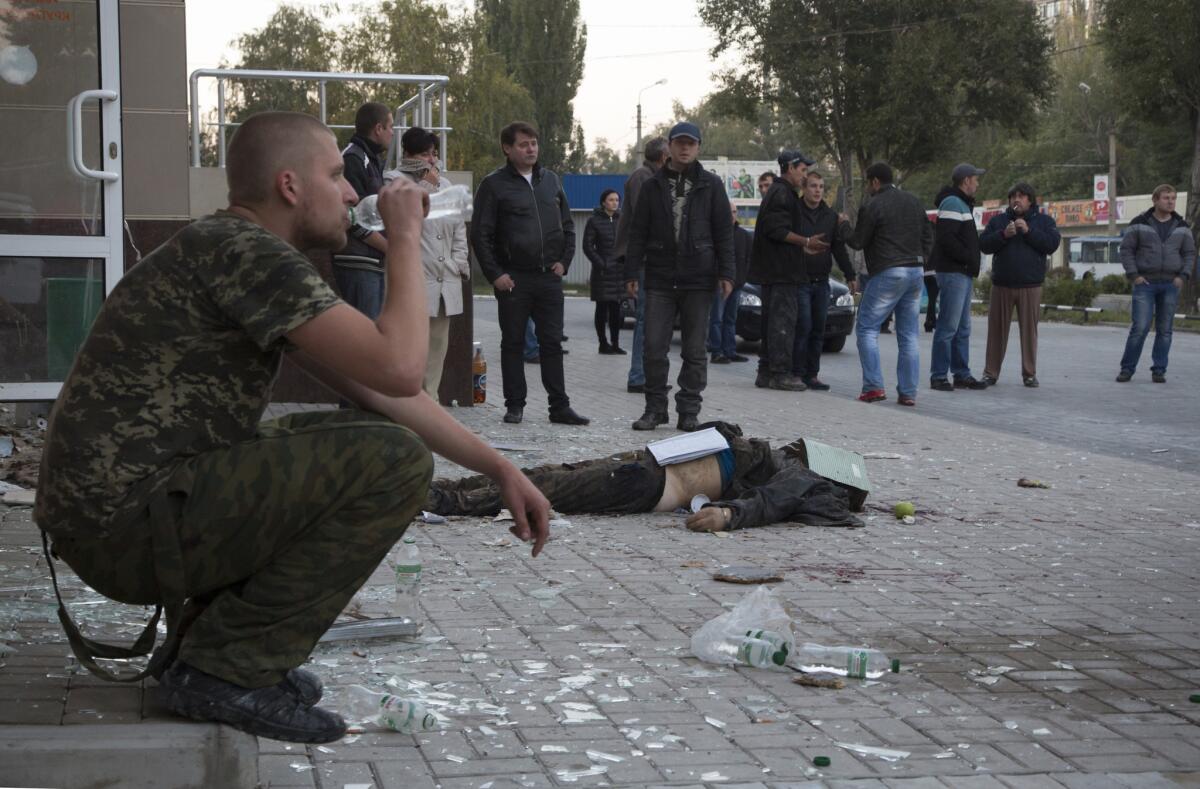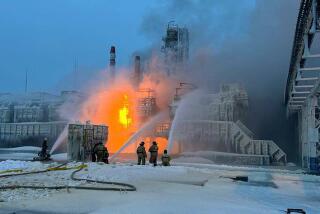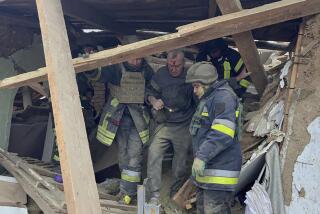U.N. reports hundreds more deaths during eastern Ukraine cease-fire

At least 331 people have been killed in fighting in eastern Ukraine since a Sept. 5 cease-fire was supposed to quell the armed conflict, the United Nations said Wednesday.
The U.N. human rights office said 3,660 deaths had been confirmed in the violence-plagued regions of Donetsk and Luhansk since April, when Ukrainian government forces began moving against pro-Russia separatists who had seized and occupied a dozen towns and cities a month earlier.
An accompanying 37-page report from the U.N. High Commissioner for Human Rights in Geneva also estimated that 4,500 homes had been destroyed in the fighting and that 25,000 people fleeing artillery fire were forced to seek shelter in basements that will be uninhabitable during the fast-approaching winter.
“For almost half a year, residents of the areas affected by the armed conflict have been deprived of their fundamental rights to education, to adequate healthcare, to housing and to opportunities to earn a living,” wrote the U.N. human rights commissioner, Zeid Raad Hussein. “Further prolongation of this crisis will make the situation untenable for the millions of people whose daily lives have been seriously disrupted.”
Hussein, in his report, called the nearly 5-week-old cease-fire “a welcome step” toward peace in the embattled region but appealed to the warring factions to genuinely respect it.
The report also cited international monitors’ observations that “an increasing number of foreign fighters, including citizens believed to be from the Russian Federation,” have been in eastern Ukraine to support the proclaimed Donetsk and Luhansk “People’s Republics.”
Russian special forces veterans initially commanded the military operations for the rebellious regions but mostly withdrew over the past summer as Russia was being pressured by the threat of tougher international sanctions to remove itself from the Ukraine conflict. That left the leaderships of the breakaway regions in disarray, which continues to thwart any restoration of normal life and social services for the territory where 6.5-million Ukrainians live.
On Wednesday, Russia’s TASS news agency quoted self-styled Donetsk People’s Republic leader Alexander Zakharchenko as denying that he had resigned.
Fighting has been particularly intense in recent weeks around Donetsk international airport, a shattered wreck of the once-showcase main terminal that would still be a coveted asset for the separatists though they have no air force. The airport was the second-busiest in Ukraine after Kiev’s but has been closed to flight operations since May and badly damaged by unrelenting artillery barrages as the separatist rebels have tried to wrest it from government control.
In Kiev, the Ukrainian capital, Col. Andriy Lysenko of the National Security and Defense Council reported three soldiers killed over the previous 24 hours and a dozen wounded. He also said three civilians had been killed in a residential area of Donetsk by shelling he blamed on the separatists. Donetsk city authorities confirmed the three fatalities but didn’t ascribe responsibility.
Ukrainian officials and their Western allies accuse Russian President Vladimir Putin of arming and instigating the separatists in a bid to control strategic territory in eastern Ukraine and provide a land bridge from the Russian mainland to the Crimean peninsula that Russian troops occupied in February.
Crimea is home to Russia’s Black Sea fleet at Sevastopol, a base leased by Russia from Ukraine until the invasion eight months ago and the Kremlin’s formal annexation of the territory on March 18.
Putin has denied having any role in the Ukraine crisis, in spite of NATO satellite imagery showing Russian armored columns entering its neighbor’s territory.
Ukrainian and Western leaders now fear a resurgence of attacks from the Russian-backed separatists ahead of a parliamentary election set for Oct. 26. The decision to move up the vote for regional representation in the Supreme Council was motivated by the dramatic political changes that have swept Ukraine over the past year, but the pro-Russia forces have rejected participation in the election for the leadership of what it considers a foreign state.
Russia’s state-controlled media began casting Ukraine’s leaders as “neo-fascists” after Kremlin-allied President Viktor Yanukovich was ousted by a popular rebellion in February after refusing to sign a trade deal with the European Union.
Supporters of the reorientation toward Western Europe prevailed in the May presidential election that made billionaire confectionery magnate Petro Poroshenko head of state. But Poroshenko’s offer of greater autonomy for the predominantly Russian-speaking eastern regions has been spurned by the separatists who now appear to be seeking to control enough territory by the time of the parliamentary elections that they can prevent voting in their occupied lands and undermine the legitimacy of the vote.
Follow @cjwilliamslat for the latest international news 24/7
More to Read
Start your day right
Sign up for Essential California for news, features and recommendations from the L.A. Times and beyond in your inbox six days a week.
You may occasionally receive promotional content from the Los Angeles Times.







